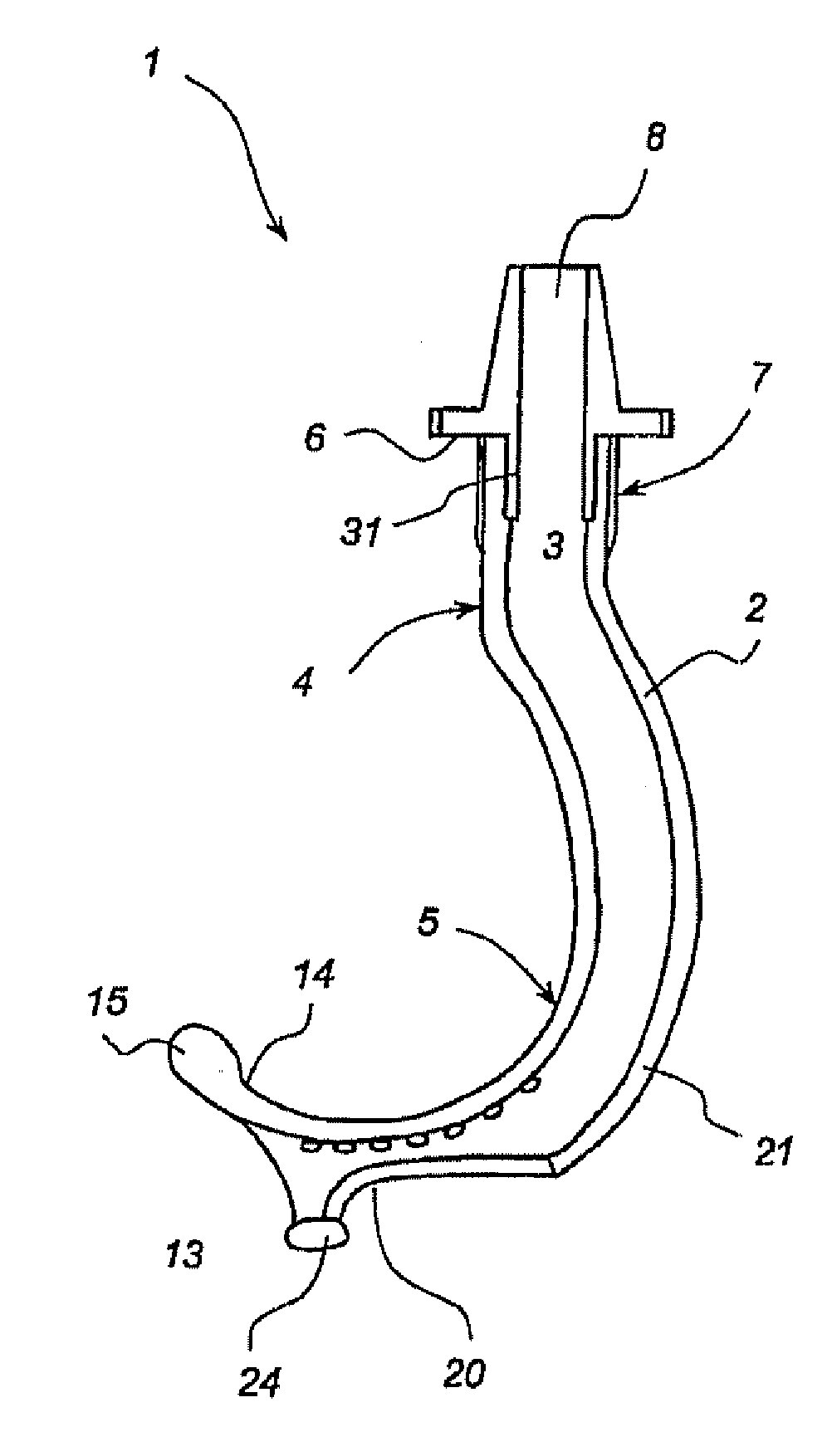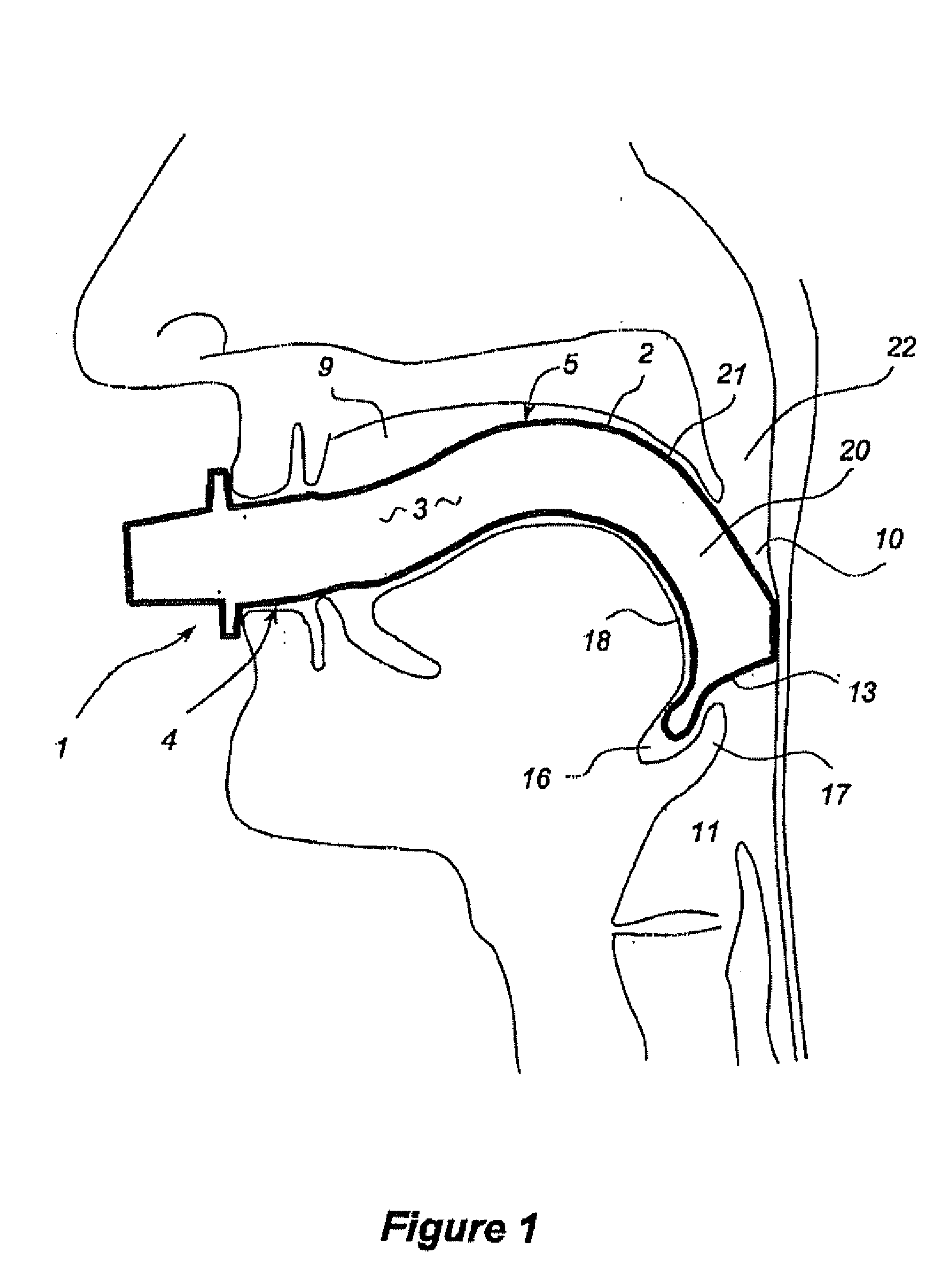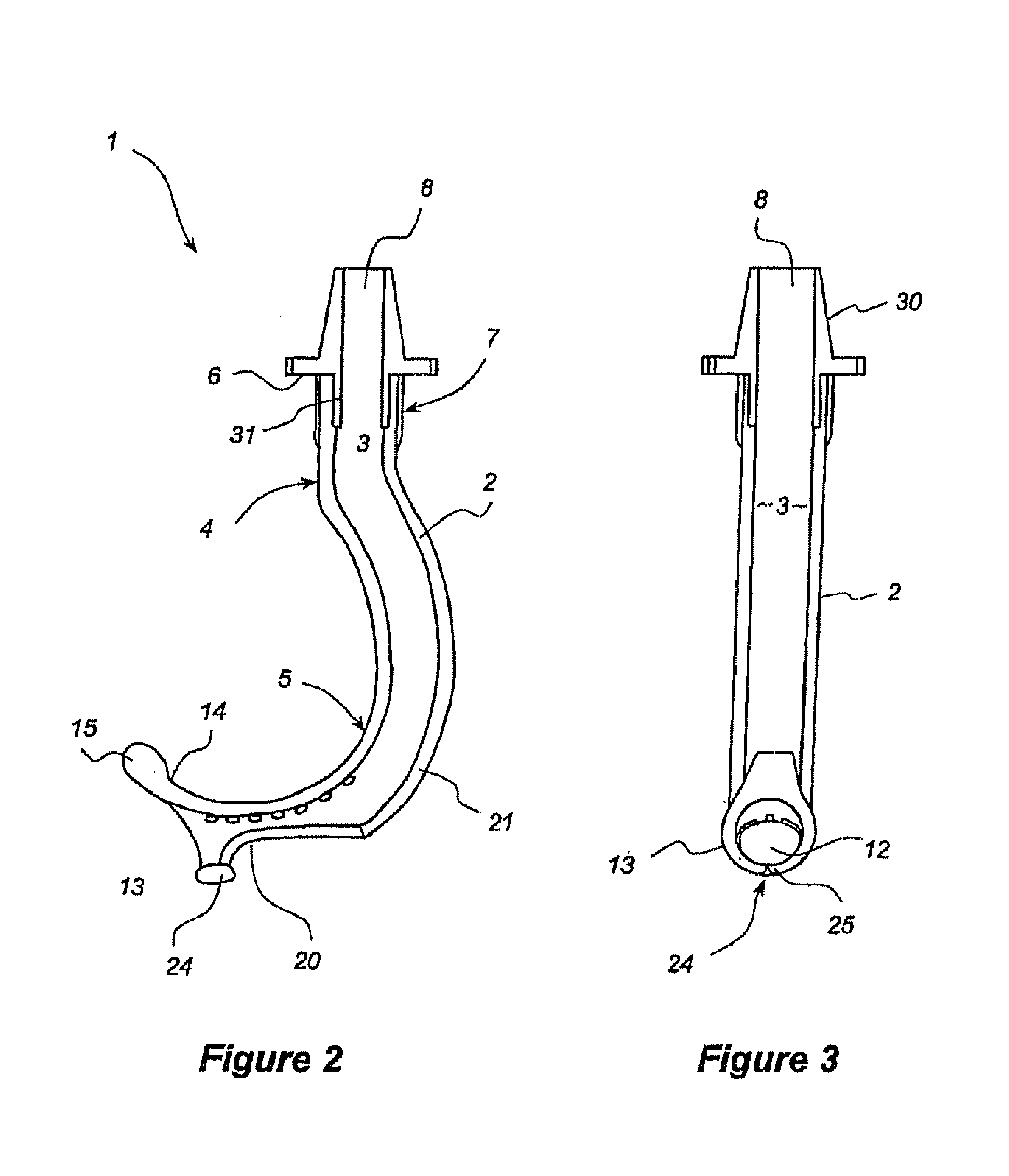Oropharyngeal Airway Device
- Summary
- Abstract
- Description
- Claims
- Application Information
AI Technical Summary
Benefits of technology
Problems solved by technology
Method used
Image
Examples
Embodiment Construction
[0046]Referring to the drawings, there is shown an improved oropharyngeal airway device shown generally at 1. The device 1 includes a tube 2 having an open passage 3 extending therethrough.
[0047]The tube 2 comprises a first portion 4 and a second portion shown generally at 5. Connected to a proximal end of the first portion 4 is a flange 6 which in combination with the first portion 4 defines a mouthpiece shown generally at 7. The mouthpiece defines an inlet 8 to the passage 3.
[0048]The tube 2 has a generally elliptical section and is longitudinally configured such that, in situ within a patient's mouth, it has a generally hook shaped profile (and is thus distinct from some prior art devices that have a generally ‘J’ shaped profile). In this case the first portion 4 of the tube 2 is generally straight and the second portion 5 has an arcuate form that extends obliquely from the first portion. This second arcuate portion 5 is configured to closely follow the pharyngeal arc defined by ...
PUM
 Login to View More
Login to View More Abstract
Description
Claims
Application Information
 Login to View More
Login to View More - R&D
- Intellectual Property
- Life Sciences
- Materials
- Tech Scout
- Unparalleled Data Quality
- Higher Quality Content
- 60% Fewer Hallucinations
Browse by: Latest US Patents, China's latest patents, Technical Efficacy Thesaurus, Application Domain, Technology Topic, Popular Technical Reports.
© 2025 PatSnap. All rights reserved.Legal|Privacy policy|Modern Slavery Act Transparency Statement|Sitemap|About US| Contact US: help@patsnap.com



